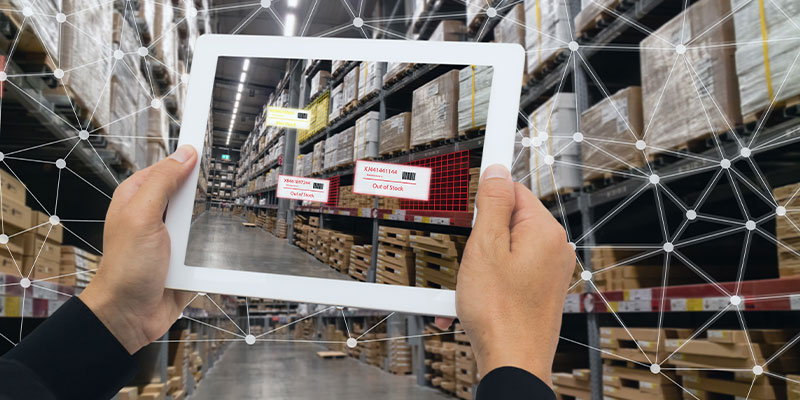How IoT Streamlines Retail Processes
The Internet of Things (IoT) is a powerful, transformative tool in the retail industry. As this technology has advanced, its applications have broadened. Now, decision-makers have several use cases to choose from when aiming to streamline operations.
1. Fitting Rooms
Integrating the IoT into fitting rooms can enhance the customer experience. For example, pressure sensors can alert associates when an abundance of unwanted items are on the put-back rack, enabling them to clear the space. If retailers combine this technology with other tools, they can offer unique interactions.
Amazon implemented this technology in a number of its physical locations. It displays only one physical instance of each item, so customers must scan QR codes to add items to their mobile carts and reserve fitting rooms. Inside, they see an augmented reality model on a smart mirror. This approach can substantially minimise shrinkage since it makes shoplifting all but impossible.
2. Security Systems
Shrinkage is an increasingly costly pain point for many retailers. It increased from $93.9 billion in 2021 to $112 billion in losses in 2022 — a 157% year-over-year increase. Many are adopting IoT security systems in response to enable remote monitoring and real-time loss prevention.
These solutions — namely IoT security cameras — are gaining traction. In fact, the video data they record and share accounts for 40% of all IoT-generated data worldwide. Businesses can use them along with sensors and radio frequency identification (RFID) tags to detect and deter theft. If they integrate artificial intelligence, they can monitor stores without human intervention.
If retailers use a low power wide area networking (LPWAN) communication protocol functioning on long-range wireless technology (LoRaWAN) system, they enable long-distance, regional connections. This is also available via NB-IoT and LTE-M M2M IoT SIM technology. These cordless, real-time solutions are ideal for managing interconnected security shared between stores.
3. Inventory Management
Manual stock-taking is inefficient, and its results quickly become irrelevant. If stockouts occur, customer satisfaction diminishes and potential revenue decreases, contributing to long-term financial impacts. IoT inventory management can streamline these processes.
Pressure and motion sensors attached to shelves connect to the internet wirelessly, sending bidirectional communication to a central management platform. Decision-makers and associates can visit a single dashboard to view stock levels in real time, optimising restocking.
In 2023, Kroger announced its intention to deploy similar technology in 500 stores for cooler doors or end caps. Smart screens replace standard glass, showing consumers which products are in stock. They can also present advertisements and announce sales, potentially upselling. With dynamic capabilities, these screens can feature interactive displays that customers can touch or responsive displays that react to the store’s environment or to customer proximity. Additionally, they provide personalised product recommendations, engaging shoppers with interactive experiences tailored to their preferences and behaviours.

4. Asset Tracking
Food retailers can utilise IoT devices to streamline asset tracking and ensure products arrive intact. Considering even a minor mechanical issue can result in cold chain perishables entering the temperature danger zone, this approach is also a crucial cost-saving effort.
As many retail professionals know, product damage sustained in transit is not always visible and receiving staff sometimes unintentionally accepts damaged goods. On average, stores waste 8% of their stock due to expiration or surplus. This figure represents $163 billion in annual losses. The supply chain pain point is a key driver.
Coles Group — an Australian supermarket chain — has integrated IoT asset tracking into its entire poultry cold chain to prevent situations like this. It deployed over 4,500 smart containers over a low-bandwidth network, aiming to meet food safety standards better and minimise waste.
5. Logistics Scheduling
Non-store retailers can benefit from leveraging the IoT to the same extent as their brick-and-mortar counterparts since internet-connected devices provide relevant information on geo-location, stock level, cash flow and customer behaviour. For example, operators who own vending machine fleets stationed at various locations can optimise logistics scheduling by using real-time insights to decide when to schedule physical visits to restock and collect cash.
6. Employee Tracking
Management can use IoT wearables to streamline scheduling and increase productivity. Outfitting employee keycards with RFID tags ensures each staff member remains accounted for at all times. Decision-makers can use the subsequent activity, efficiency, and location-based insights to simplify administrative processes.
Notably, managers can also use this IoT solution to power access control systems, preventing unauthorised access attempts and improving building security. For example, they can install doors to restricted areas that only open when someone’s RFID keycard is near. Alternatively, they could track peoples’ comings and goings to deter break room theft.
7. Equipment Management
Businesses can use IoT sensors to enable predictive maintenance, preventing equipment from breaking unexpectedly and causing unplanned downtime. Temperature, humidity, motion, pressure, and water sensors can alert technicians of potential pipe, HVAC or cooler malfunctions before any noticeable failure occurs.
Walmart has developed proprietary IoT-driven software for this exact purpose. The retail giant analyses one terabyte of IoT information daily, searching for abnormalities like refrigeration failures. Its goal is to standardise maintenance and make data-driven insights more accessible.
8. Facility Management
Retailers can use IoT for facility management purposes, resulting in numerous administrative process improvements. They can use sensors to control lighting, HVAC systems and automatic doors based on occupancy levels or proximity, reducing power consumption and saving costs.
IoT-Driven Business Opportunities Are Here
Decision-makers who decide to implement IoT will likely see growth. Those who adopt these solutions have a marked competitive edge over those who do not. Moreover, they often see increased cost savings and worker productivity while lowering financial losses and preventing shrinkage.
For flexible and competitive IoT connectivity solutions based on M2M or LoRaWAN connectivity, retailers in the United States, United Kingdom and Europe should contact melita.io today. With over 30 years of telecommunications expertise, best-in-class support, and an extensive network of IoT solutions partners, Melita offers unparalleled service and reliability on a global level.
